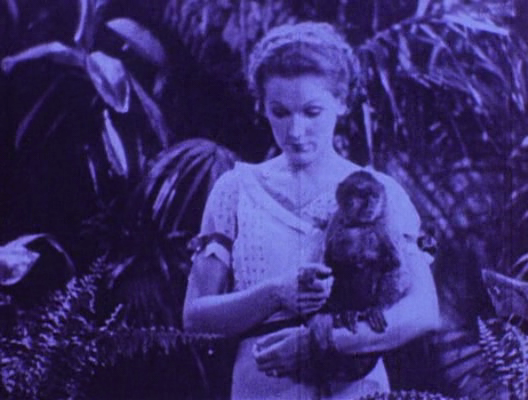At City Gallery, we are currently showing Lost World, an exhibition of work by British artist John Stezaker. He makes collages using stills from long-forgotten films, conjuring a new world from their ‘lost world’. One of his heroes and big influences is the American surrealist Joseph Cornell. Cornell is famous for his assemblages and collages, but he was also a filmmaker.
Cornell loved the movies and particularly movie actresses. He was transfixed by Jennifer Jones and Hedy Lamarr. He would acquire 16mm film prints to entertain himself and his housebound younger brother, Robert. One of these was the feature East of Borneo (1931), a convoluted tale of love, loss, and adventure in the jungle, featuring crocodiles and pythons. It may have been a potboiler, but Cornell adored its star, Rose Hobart.
To make the film less tedious for repeat viewing, he re-edited it, excising boring narrative exposition, but retaining the good bits—shots of the delectable Hobart (often nocturnal scenes). In the process, he reduced the feature to a breezy twenty minutes of oneiric incoherence, slipping in footage of an eclipse for good measure. He projected his film through blue glass at languid silent-film speed, and replaced its soundtrack with jaunty numbers from Nestor Amaral’s record Holiday in Brazil, redoubling the original film’s air of frivolous exoticism.
According to legend, when Cornell’s Rose Hobart was first shown publicly, at Julien Levy’s New York gallery in 1936, a jealous Salvador Dalí knocked over the projector, complaining that Cornell had stolen his idea. ‘He stole it from my subconscious!’, Dalí declared. Through collage, Cornell had distilled the magical and memorable from the conventional and forgettable, anticipating situationist détournement, appropriation, and MTV. Today, the film is celebrated as a classic of surrealist cinema and a foundational work of American avantgarde cinema.
On Wednesday 8 November, at 6pm, Raymond Spiteri, from Victoria University, will introduce a rare screening of Rose Hobart at City Gallery.
—Robert Leonard, Chief Curator


